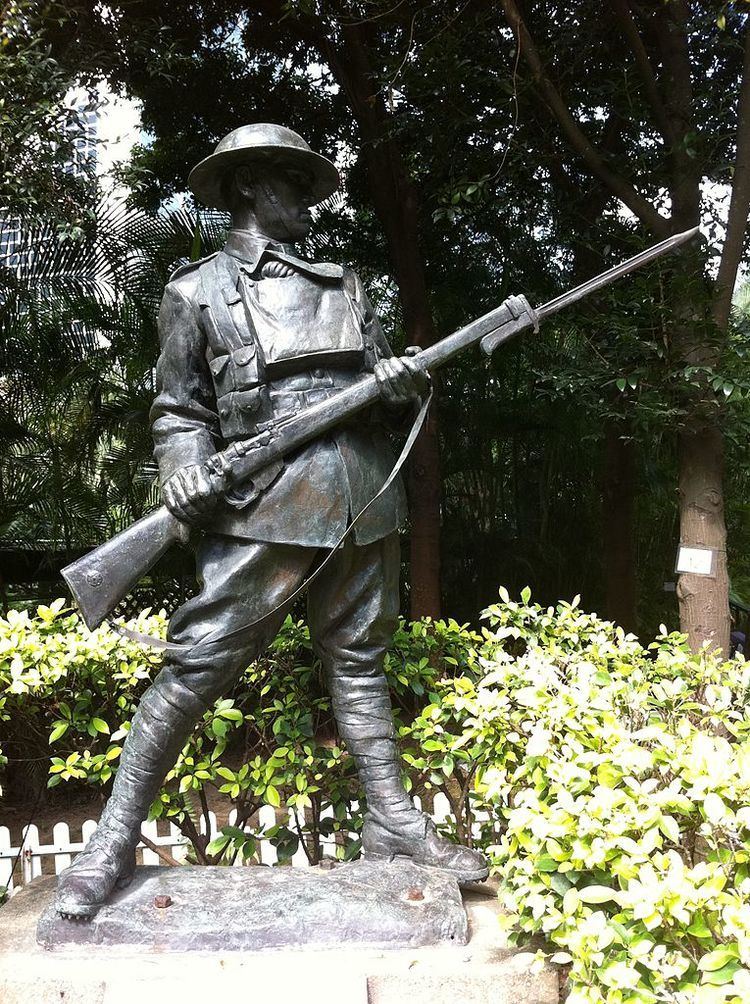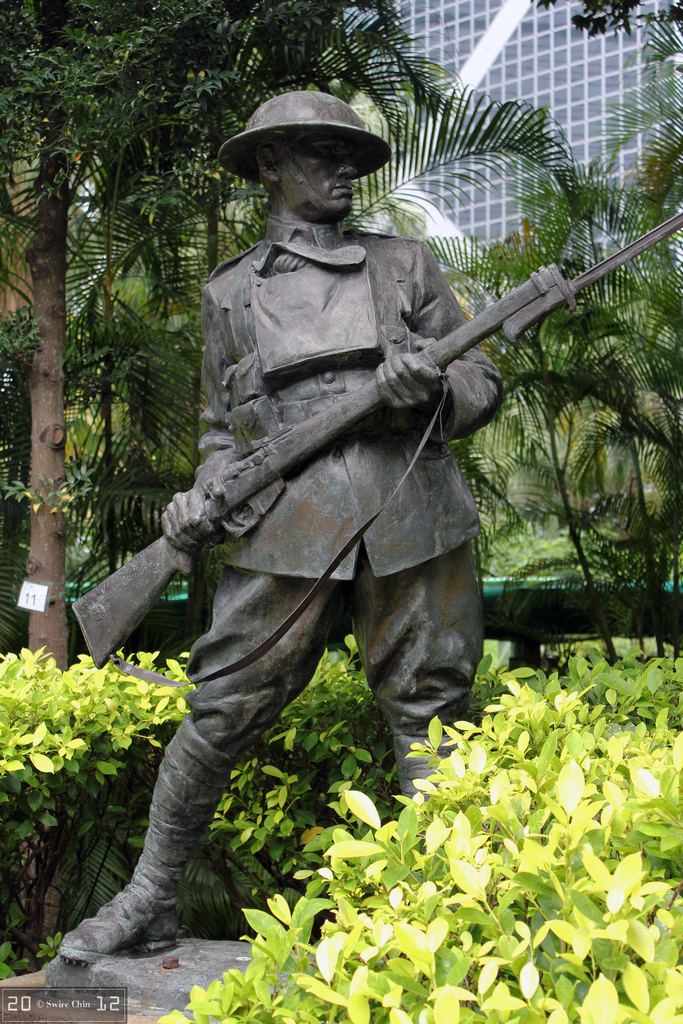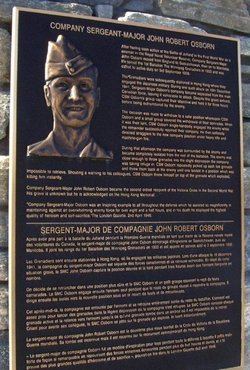Rank Company sergeant major Years of service 1933-41 † | Name John Osborn Role Armed force officer | |
 | ||
Born 2 January 1899Foulden, Norfolk, England ( 1899-01-02 ) Battles/wars World War IWorld War II Similar People Mark Aitchison Young, Takashi Sakai, Christopher Maltby, Samuel Lewis Honey, James Edward Tait | ||
Heritage minute john robert osborn
John Robert Osborn, VC (2 January 1899 – 19 December 1941) was a Canadian soldier. Osborn is a recipient of the Victoria Cross, the highest and most prestigious award for gallantry in the face of the enemy that can be awarded to British and Commonwealth forces. He was born in Norfolk, England, and served in the Royal Navy during World War I.
Contents

John robert osborn
Details

Osborn was born in England and came to Canada in 1920, after serving World War I with the Royal Naval Volunteer Reserve. Osborn first lived in Saskatchewan and then settled in Winnipeg, Manitoba. He was 42 years old, and a Warrant Officer Second Class, holding an appointment as Company Sergeant-Major for A Company in the 1st Battalion, The Winnipeg Grenadiers, Canadian Army, (Canadian Infantry Corps) during the Second World War when the following deed took place on Mount Butler, Hong Kong for which he was awarded the VC.
His citation in the London Gazette reads:
At Hong Kong on the morning of 19th December 1941 a Company of the Winnipeg Grenadiers to which Company Sergeant-Major Osborn belonged became divided during an attack on Mount Butler, a hill rising steeply above sea level. A part of the Company led by Company Sergeant-Major Osborn captured the hill at the point of the bayonet and held it for three hours when, owing to the superior numbers of the enemy and to fire from an unprotected flank, the position became untenable. Company Sergeant-Major Osborn and a small group covered the withdrawal and when their turn came to fall back, Osborn single-handed engaged the enemy while the remainder successfully rejoined the Company. Company Sergeant-Major Osborn had to run the gauntlet of heavy rifle and machine gun fire. With no consideration for his own safety he assisted and directed stragglers to the new Company position exposing himself to heavy enemy fire to cover their retirement. Whenever danger threatened he was there to encourage his men.
During the afternoon the Company was cut off from the Battalion and completely surrounded by the enemy who were able to approach to within grenade throwing distance of the slight depression which the Company was holding. Several enemy grenades were thrown which Company Sergeant-Major Osborn picked up and threw back. The enemy threw a grenade which landed in a position where it was impossible to pick it up and return it in time. Shouting a warning to his comrades this gallant Warrant Officer threw himself on the grenade which exploded killing him instantly. His self-sacrifice undoubtedly saved the lives of many others.
Company Sergeant-Major Osborn was an inspiring example to all throughout the defence which he assisted so magnificently in maintaining against an overwhelming enemy force for over eight and a half hours and in his death he displayed the highest quality of heroism and self-sacrifice.
Osborn was the first Canadian awarded a Victoria Cross in the Second World War. His was the only Victoria Cross awarded for Battle of Hong Kong.
Legacy
He is memorialised by a statue of an anonymous World War I soldier located in Hong Kong Park. The statue was originally part of the Eu Tong Sen statuary collection at Eucliff villa. When Eucliff villa was demolished, the statue was donated to Osborn Barracks in Kowloon in the 1980s and where it stayed for 20 years before being relocated to Hong Kong Park.
In 2005, a plaque remembering Osborn's sacrifice was unveiled on the Wilson Trail parallel to where he fell. The supposed spot where he died is marked by a pile of rocks nearby the sign, but is relatively inaccessible due to heavy foliage.
In 2005, Historica Canada created a Heritage Minute honouring his heroic sacrifice.
Osborn Barracks in Kowloon Tong, New Kowloon was named after him (since 1997 the site is known as Kowloon East Barracks).
His name is engraved on the memorial hall of Sai Wan War Cemetery in Hong Kong.
A residential street in Brantford, Ontario is named after him (Osborn Ave).
His medals are displayed in the Canadian War Museum, Ottawa, Ontario, Canada.
